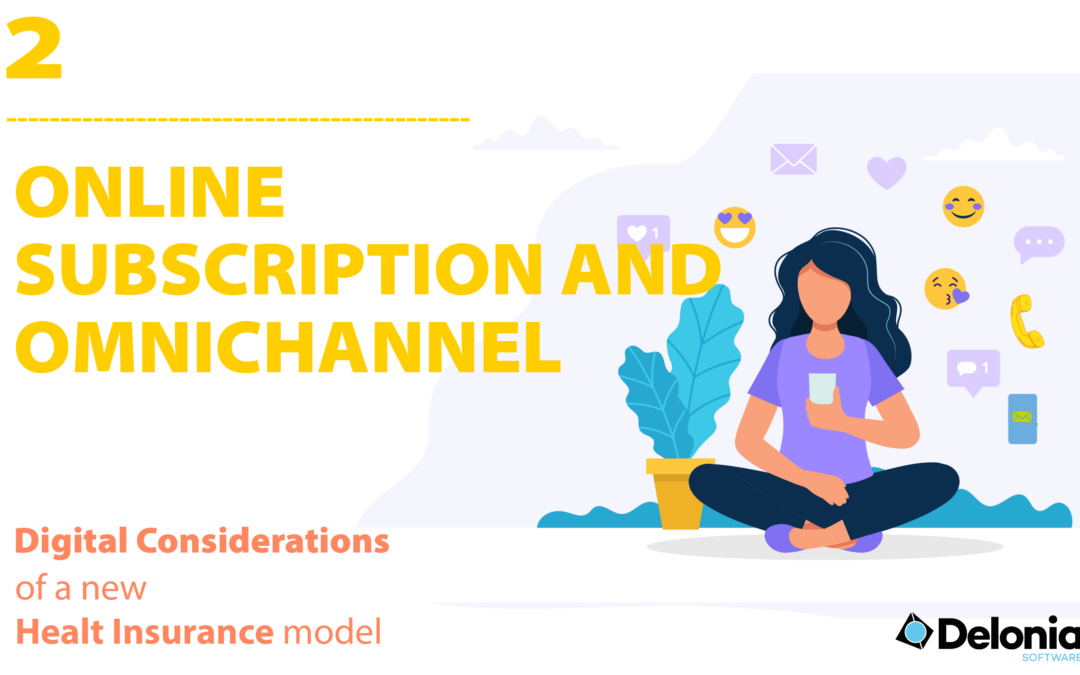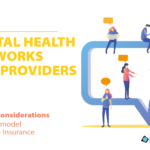When a client uses different channels to carry out an action with a health company, be it purchasing insurance or requesting a medical authorization, they usually perceive a lack of coordination in the insurer. Even if the customer has a website, chat, app, social networks, telephone customer service, face-to-face customer service in the office and through a mediator, he/she will probably be provided with a multichannel communication disconnected from each other, unable to create a homogeneous experience.
However, when an omnichannel experience is offered, there is continuity and consistency in the company’s response, which completely changes the image of the entity and the perception received by the customer. It avoids, for example, the frustration of having to provide data that the company already has depending on the area the customer is targeting.
In fact an omnichannel strategy is a well-done multichannel strategy, its natural evolution. It involves moving through interconnected channels from where it is easy to switch from one to another, in a coordinated and fluid manner, without the customer having to repeat actions they have already taken or provide information they have already given.
Despite the well-known customer experience, omnichannel is not common. It is not easy to achieve or solve adequately and requires that the company’s operations are very well entrenched and connected to each other.

1. Online Subscription.
There is no doubt that online insurance sales and underwriting is currently one of the most widespread processes among insurers. Almost across the board, the process is complete as long as there are no medical conditions or conflict with product underwriting standards.
Precisely, the most delicate point, one of those moments of truth that is decisive for the company and that often causes the abandonment of the interested party, is when faced with the medical questionnaire.In a specific post we will discuss in more detail how to configure this questionnaire in order to optimize it. We will even consider whether in our new digital world it is possible to dispense with the questionnaire without losing control of the risk.
Faced with the online sales process, there are issues that are fundamental in designing a user experience that is simple, motivating and successful.
What are the decisive aspects that favor recruitment?
1. Simple product/coverage offering with few and well-differentiated options. Experts use nuanced language that the general public does not understand. The usual and most effective approach seems to be to propose the offer to three. In this case, the most interesting product for the company is highlighted in the center of the design, accompanied by a more basic (and cheaper) one and a more complete (and expensive) one.
2. Pricing with minimum and anonymous data. So that the customer can get an idea of the price. It is important to keep the captured data so that, in the case of continuing the process, the customer does not have to re-enter them and only needs to confirm them.
3. Define data recovery points. Where the data provided by the customer is stored by the system associated with an identifier (for example email, mobile, ip …) This will serve to continue the process at any other time.
4. Is the potential client still interested? We move on to the Health Questionnaire. Considering that we are normally talking about family policies with several members, it is necessary to take special care in this point. The “technical” ideal would be for each prospective policyholder to complete a health questionnaire. If this is not practical, another alternative is to have the policyholder complete the form for all applicants and then have each insured (of legal age) sign or confirm the form. This action would be taken at the time the policyholder Welcome Experience begins, a topic that will be covered in a separate post in this series.
5. If there is no conflict with the automatic underwriting rules, it is passed to the request for economic data and insurance premium payment methods. Logically, depending on the effective date of the policy, a first payment could be required by card, Bizum or any other means of instant payment that the system may contemplate.
6. If there is a conflict, the operation will normally require an assessment by the company. This should be implemented by triggering a task via a plan orWorkflowwhere the initiative passes to the company. It will respond to the insurance application and may complete the underwriting by means of an insurance proposal that may include over-premium, exclusions, change of product or change of contractable family group. Coverage can always be offered, even if it is basic, rather than rejecting a potential client.
7. Last step for the perfection of the contract. Enable policyholders’ private areas by means of a Welcome Experience that configures and explains how to access the services contemplated in the policy. The first step in this Experience would be the signing of the health questionnaires and policy conditions, i.e., perfecting the contract.
The most delicate point, which often leads to the abandonment of the interested party, is when faced with the medical questionnaire that, as a rule, must be filled out in order to subscribe to a health insurance policy. But would it be unreasonable to think of taking out health insurance without a medical questionnaire? If this element is eliminated, what should be done so that the company does not lose control over the risk?

2. Omnichannel.
Ideally, a company should ensure that all its processes can start, continue and end regardless of the channel used. We understand as a channel, the entity’s website, telephone, social networks, chat and, of course, the face-to-face channel and the mediator, still so important in the insurance sector.
In the case of policy underwriting, the customer can start an application on the web but, in case of any doubt or interruption, finish by phone without having to repeat all the steps. Similarly, an agent can initiate a sales transaction face-to-face in an office and let the customer think about it and complete the deal with a link on the web. A client may even be reluctant to give his health information directly to a person, for example a broker, and may prefer to complete his health declaration on his own in the privacy of a web screen.
To approach this problem from an operations point of view, it is necessary to define a series of steps or intermediate points [PIPE], in this case, in the policy issuance processwhere the process stores information associated with the customer. At these points, the action may be continued at a later date. Obviously, these intermediate milestones will be accessible to the channels that the company decides to make available to its customers.
An example of this process would be:
- PIPE 1 Quote: After saving a quote with id/email of the potential customer.
- PIPE 2 Health Questionnaires: Before completing the health questionnaire and after collecting information on the persons to be included in the application.
- PIPE 3 Insurance Proposal: After generating the insurance proposal from the company. The proposal can be automatic (automatic underwriting standards) or after assessment by the company (managed underwriting standards).
- PIPE 4 Acceptance of Insurance: Financial information, method of payment, installment, effective date, etc. is provided. The effective date requested by the customer will condition the economic information.
- PIPE 5 Signing the Contract: The signing of the contract is linked to the first step of the Welcome Experience with the opening of the policyholder’s Private Area.
At any of these five points, the process should be able to be continued from any enabled channel. This could lead to an operation involving two or more channels. For example, a customer could start the contracting process in an office, then continue by phone and finish on the web, achieving a true omnichannel experience and avoiding loss of relevant information in the process. This would avoid a lot of frustration and significantly improve the user experience. And if this is necessary at any time during the life of the policy, it is especially relevant at the time of underwriting, where it is essential to make profitable the high investment that companies make in customer acquisition.
Ideally a company should ensure that all its processes can start, continue and finish regardless of the channel used
It is necessary to work on appropriate technological solutions that create an ideal and homogeneous customer experience. This information may not be segmented or provide the company with a partial or incomplete view of the insured, both at the time of contracting and in the use made of the services thereafter.




